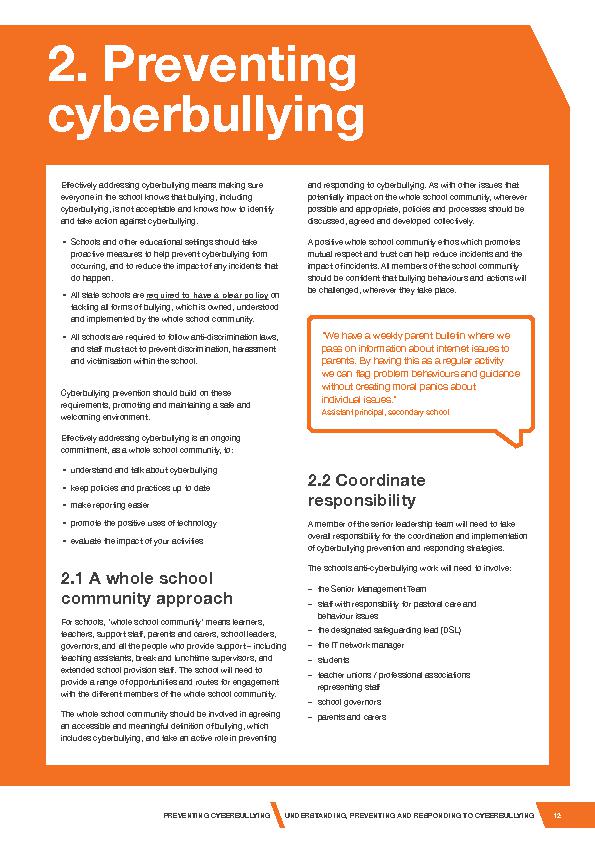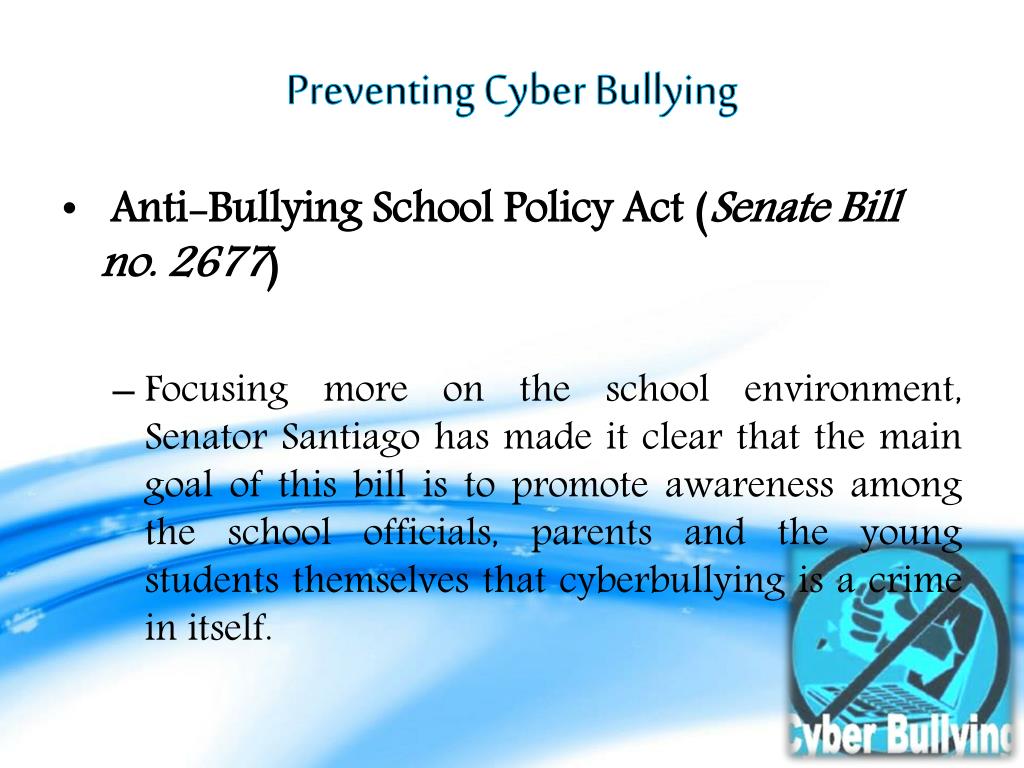Post 3: Prevention Strategies
School Policies and guidelines
1. To prevent cyberbullying from occurring you must understand exactly what it is. Reaearch what constitutes cyberbullying, as well as how and where it is most likely to occur. Talk to your friends about what they are seeing and experiencing.
2. Safeguard your password and other private information where others can see it. Also, never give out this information to anyone, even your best friend.
3. Before posting or sending that sexy image of yourself, consider if it's something you would want your parents, grandparents, and the rest of the world to see.
4. Never open messages from people you don't know, or from those you know often bully others. Delete them without reading. They could contain viruses that automatically infect your device if opened. Also never click on links to pages that are sent from someone you don't know.
5. Don't save passwords in form fields within websites or your web browser for convenience, and don't stay logged in when you walk away from the computer or cell phone.
Link to Bay Primary school Policy against bullying
Parental involvement and education
- Offer comfort and support. Talking about any bullying experiences you had in your childhood might help your child feel less alone.
- Let your child know that it's not their fault. Bullying says more about the bully than the victim. Praise your child for doing the right thing by talking to you about it. Remind your child you're in this together. Reassure your child that you'll figure out what to do.
- Notify the school. Tell the principal, school nurse, or a counsellor or teacher about the situation. Many schools, school districts, and after-school clubs have rules for responding to cyberbullying. These vary by district and state. But before reporting the problem, let your child know that you plan to do so, so that you can work out a plan that makes you both feel comfortable.
- Encourage your child not to respond to cyberbullying. Doing so just makes the situation worse.
- Keep records. Keep screen shots of the threatening messages, pictures, and texts. These can be used as evidence with the bully's parents, school, employer, or even the police.
- Get help. If your child agrees, meeting with a therapist may help work through feelings. A counsellor or mediator at school may work with your child alone or together with the bully.
Bystander intervention training
Bystander intervention approaches can be active or passive. Direct intervention involves calling out harassment and offering support to the cyberbullying victim, while indirect intervention includes reporting, flagging and documenting incidents for appropriate action. Bystanders should never forward on or respond to messages or photos that may be offensive or upsetting. Support the person who is being bullied to ask for help e.g. go with them to a place they can get help or provide them with information about where to go for help.



Comments
Post a Comment